Masterpiece Story: L.O.V.E. by Maurizio Cattelan
In the heart of Milan, steps away from the iconic Duomo, Piazza Affari hosts a provocative sculpture by Maurizio Cattelan. Titled...
Lisa Scalone 8 July 2024
17 March 2024 min Read
The Virgin of Guadalupe depicts the narrative of the Christian Virgin Mary who allegedly appeared multiple times in December 1531 before a Mexican peasant Juan Diego and his uncle Juan Bernardino. These five Marian apparitions became the cornerstone of the faith for Our Lady of Guadalupe.
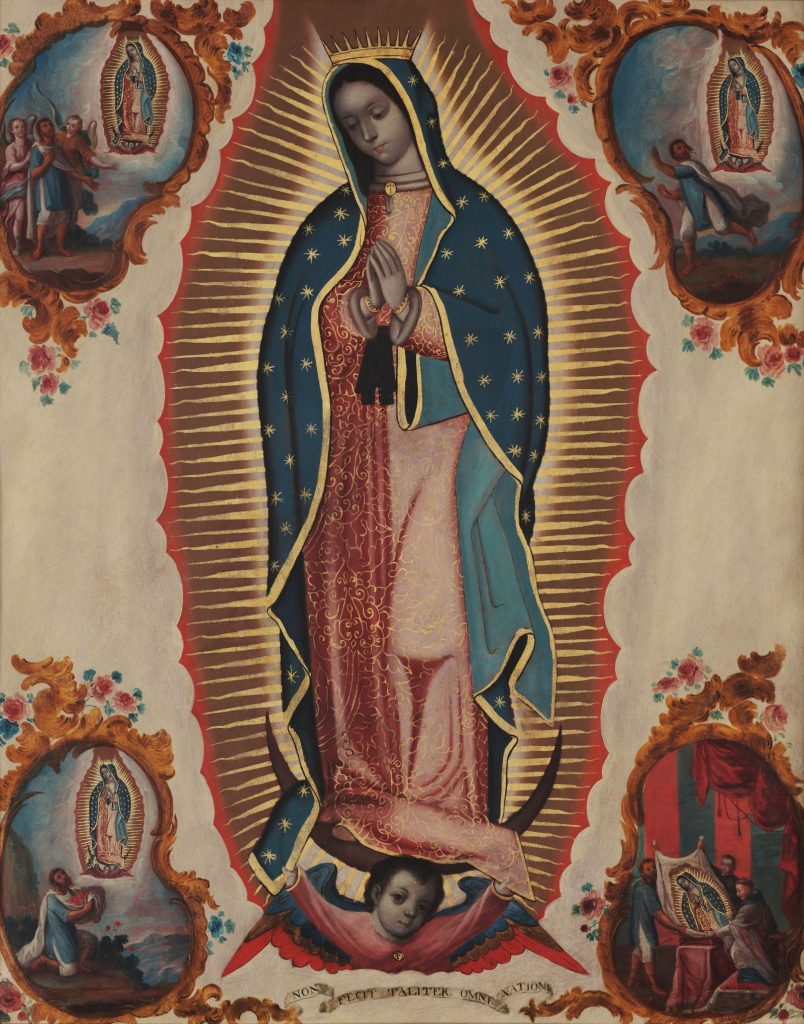
Sebastián Zalcedo lived and worked in late 18th-century Mexico. Little is known about him except for a few works in the Museo Provincial de Guadalajara (Regional Museum of Guadalajara), and the Iglesia de la Enseñanza (Teaching Church) of Mexico City. Zalcedo painted the Virgin of Guadalupe circa 1780. Due to its small dimensions of 26.9 x 21.6 in. (68.4 x 54.8 cm), and being painted on copper, it was most likely created for private worship in a domestic interior. However, shortly after its creation, it was donated in 1783 to the Santuario de Guadalupe (Shrine of Guadalupe) in modern Santa Fe, USA. Eventually, it later enjoyed a wider audience at the Museo Colección Blaisten in Mexico City.
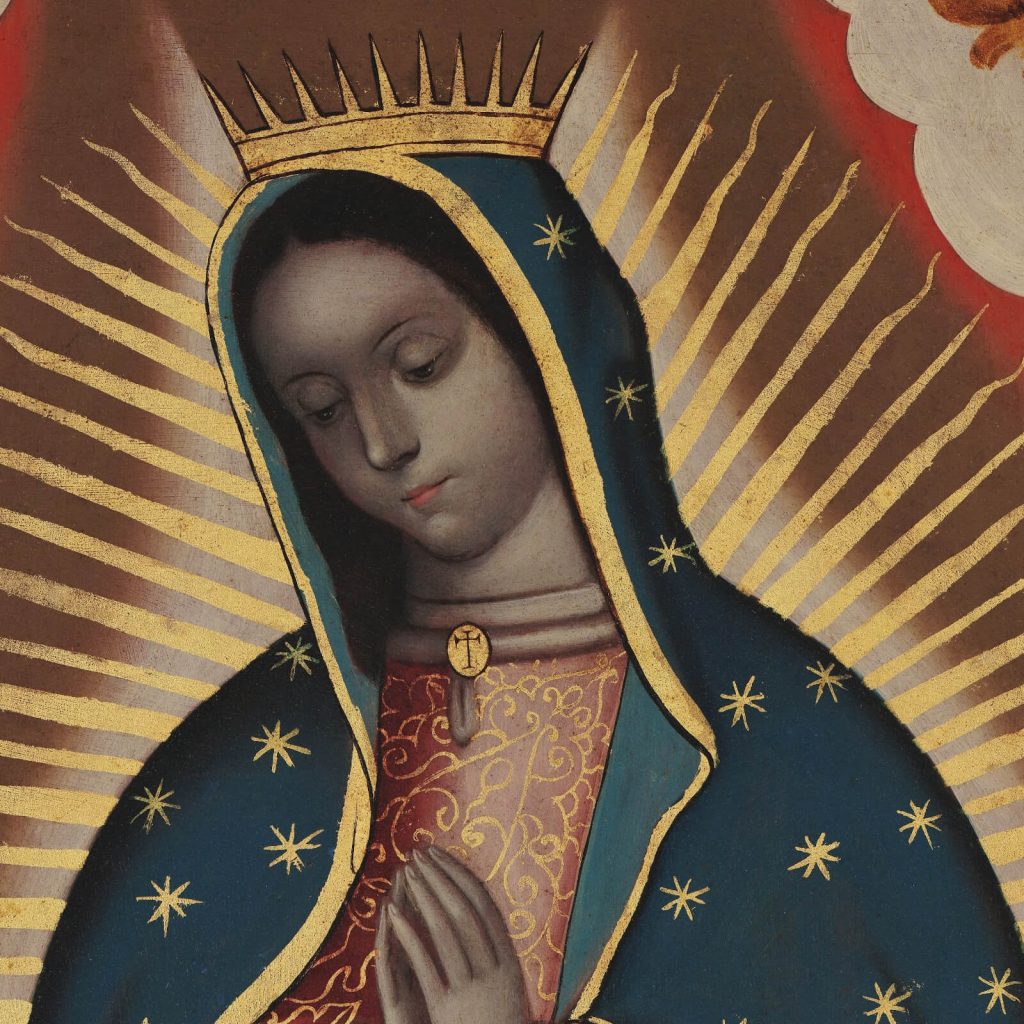
Juan Diego, a Mexican peasant, was atop Cerro del Tepeyac (Tepeyac Hill) in the northernmost borough of modern Mexico City. Then suddenly the Virgin Mary appeared before him. She spoke to him in his native Nahuatl language which was spoken by the former Aztec Empire (ended 1521). Mary asked Juan Diego to build her a chapel on Tepeyac Hill to spread her message to the local inhabitants. This first apparition, which occurred on 19 December 1531 is highlighted in the miniature narrative in the upper left corner. The Virgin Mary appears before an astonished Juan Diego. His eyes fixate on the floating figure while his right-hand touches his chest. Two angels embrace Juan Diego and heighten the emotions of this ethereal moment. The Virgin Mary would appear again later the same day after Juan Diego spoke to the Archbishop of Mexico City, Don Juan de Zumárraga y Arrazola, about building a chapel on Tepeyac Hill.
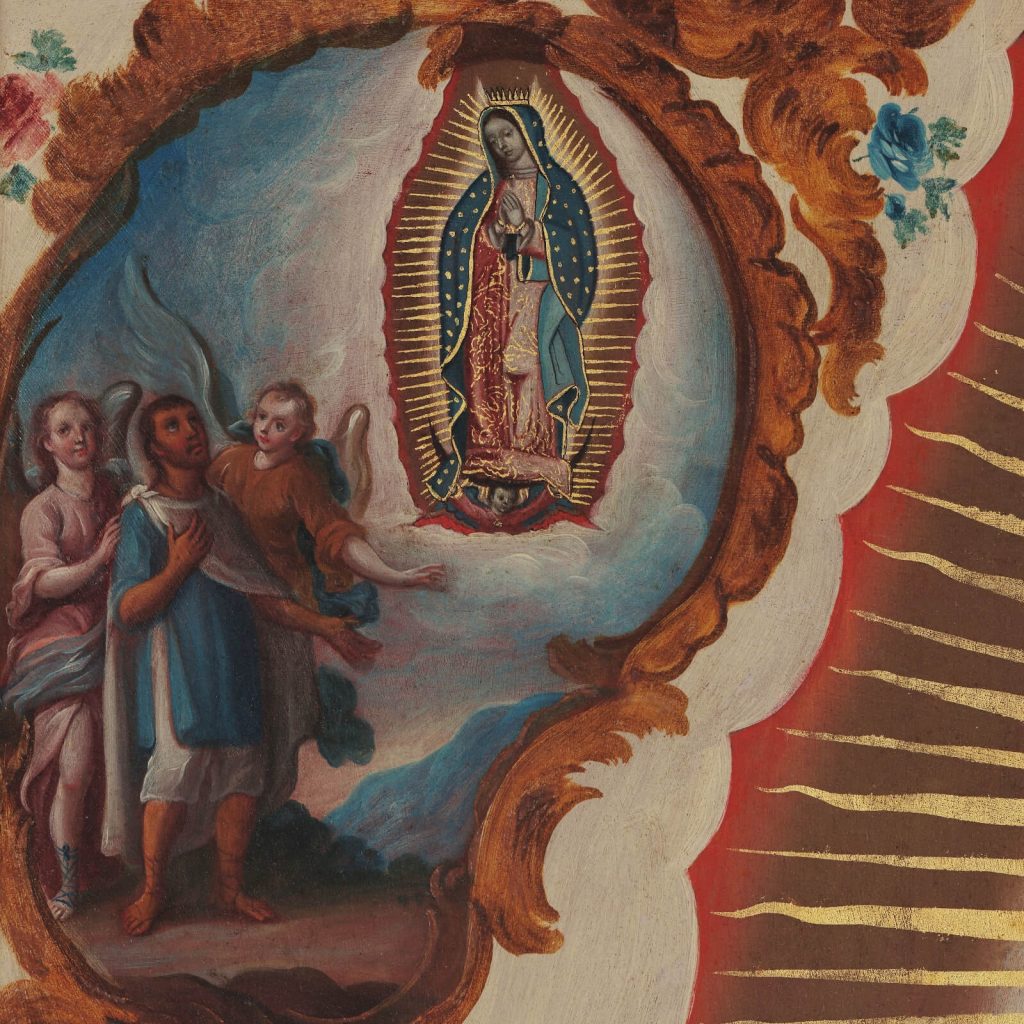
Juan Diego requested the Archbishop again to build a chapel. The Archbishop asked for a sign as proof before he would consent. Juan Diego returned to Tepeyac Hill and the Virgin Mary appeared again and she said she would reveal a sign the next day on 21 December. This apparition is not depicted in Zalcedo’s Virgin of Guadalupe.
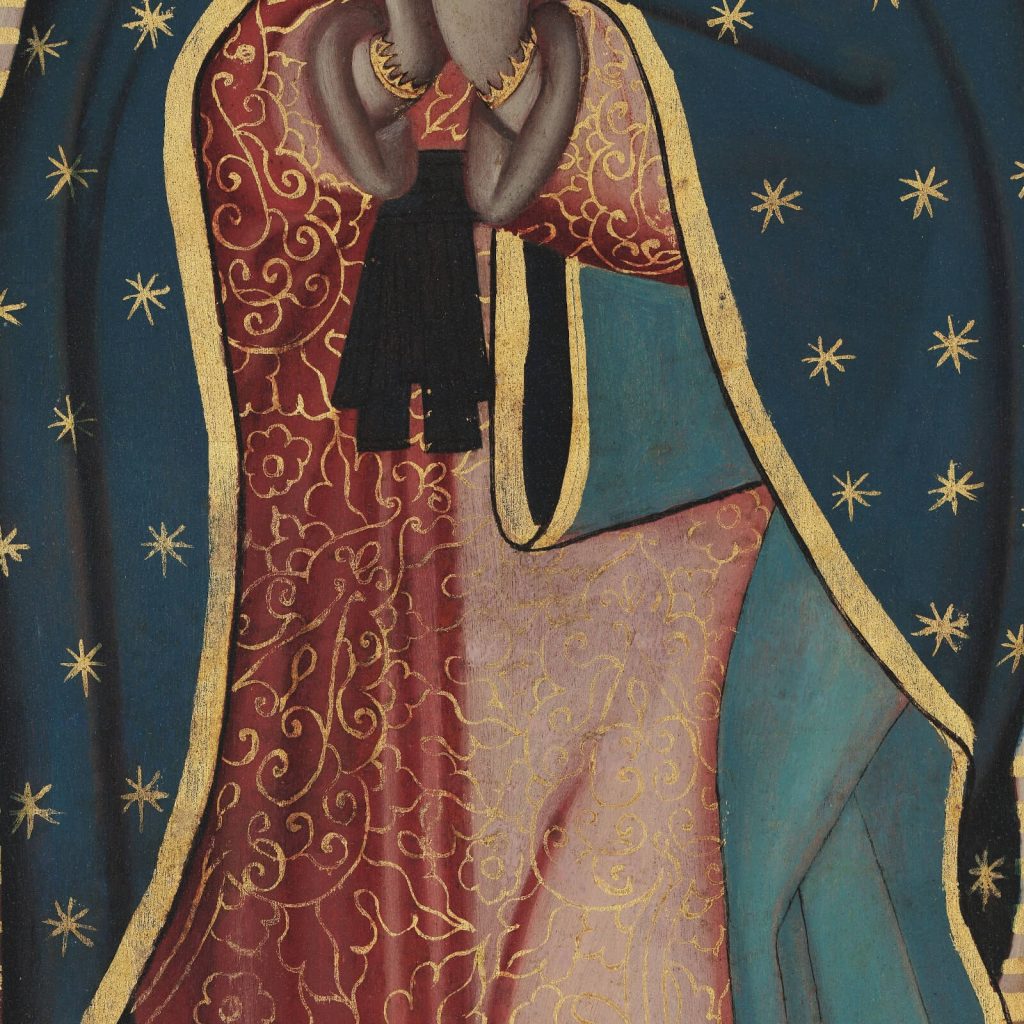
Juan Diego failed to meet the Virgin Mary on 21 December as agreed. Juan Diego felt terrible about not keeping his heavenly engagement, but he had more pressing earthly concerns. His beloved uncle, Juan Bernardino, was fatally ill and lay dying in bed. Juan Diego missed his appointment to aid and attend to his dying uncle. This scene is not depicted in the painting.
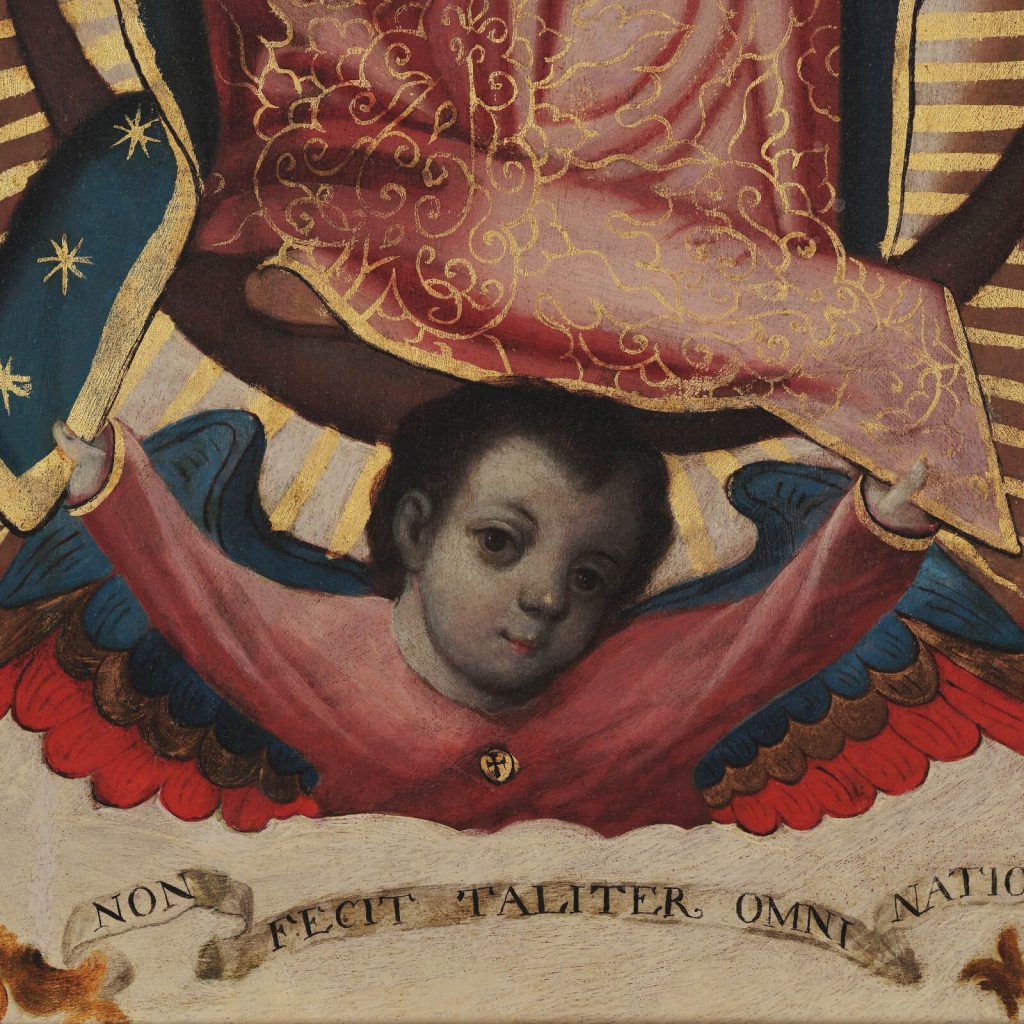
Juan Diego journeyed to fetch a priest for his uncle’s death confession and last rites. However, along his frenzied path, the Virgin Mary appeared for the fourth time on 22 December. She questioned Juan Diego why he did not meet her yesterday as agreed. Juan Diego explained everything. The Virgin Mary then famously remarked, “¿No estoy yo aquí que soy tu madre?” (Am I not here, who is your mother?) Zalcedo captures Juan Diego’s mania in the upper right scene. Juan Diego runs with his arms outstretched. His head jerks to the side over his shoulder as he sees the Virgin Mary again. Captured in the miniature image is the moment before he ceases to run and hears her encouraging messages. The Virgin Mary continued to encourage him by saying his uncle is alive and cured. As for the sign the Archbishop wanted, Juan Diego was instructed to return to the top of Tepeyac Hill to collect the flowers now growing there.
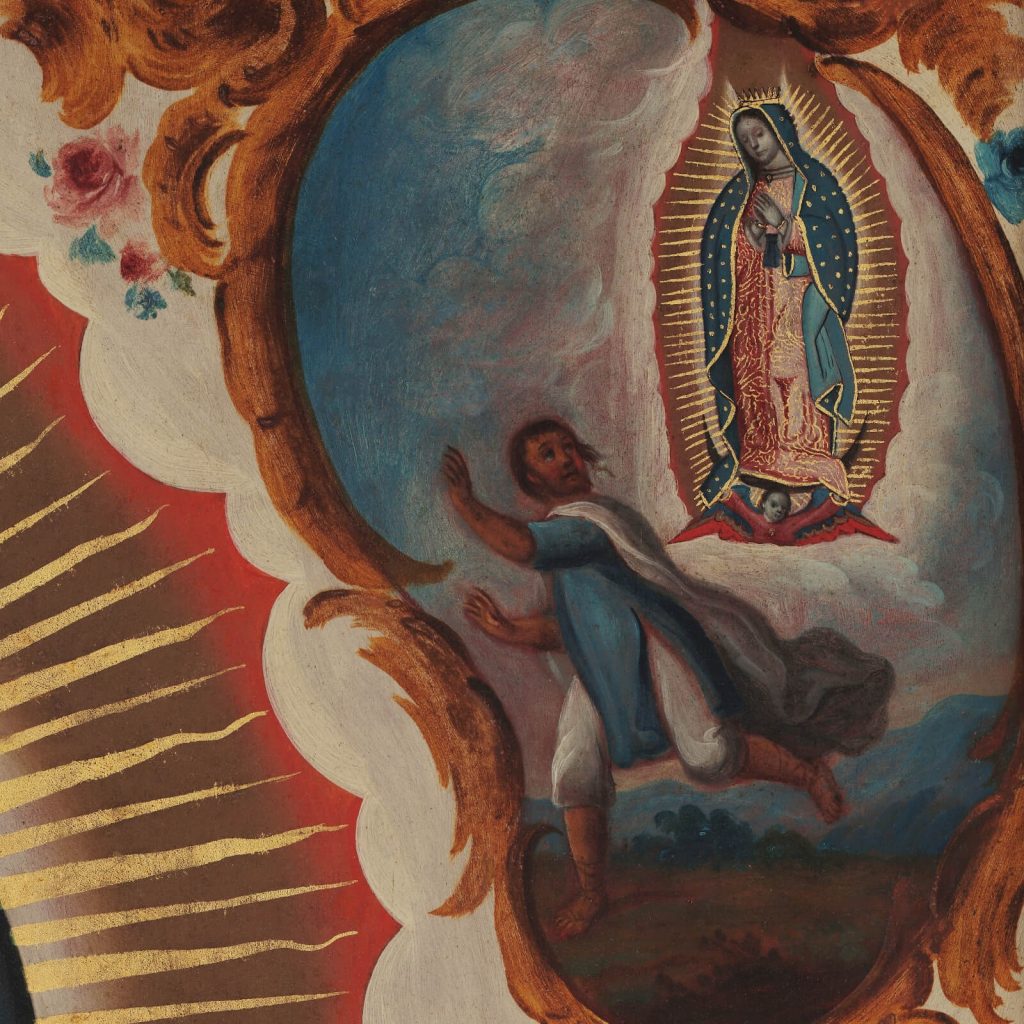
Juan Diego returned to Tepeyac Hill and witnessed a miraculous sign. Whereas two days earlier (20 December) the hill was cold and barren, it was now warm and covered in Castilian red roses. This scene is depicted in the lower-left corner of Zalcedo’s Virgin of Guadalupe. Some theological scholars argue whether the Virgin Mary appeared again on 22 December on top of Tepeyac Hill when Juan Diego collected the flowers. Most believers say she did not appear during the picking of the roses, but that her spirit was present to bless the flowers. Juan Diego, as seen in the miniature, collects the rose petals in his tilma (cloak). His eyes are lifted in a faithful stare.
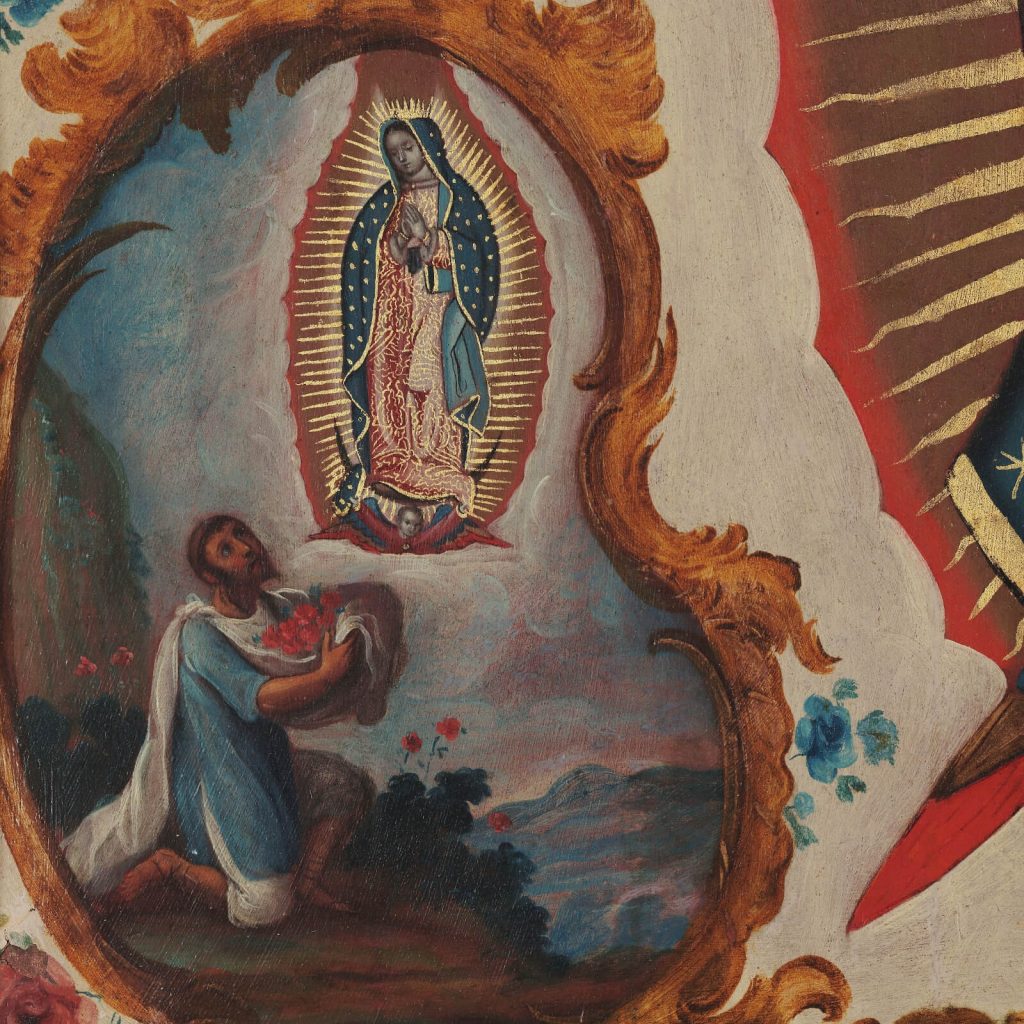
In the bottom right corner of the painting is the last scene depicted from the Our Lady of Guadalupe narrative. When Juan Diego visited the Archbishop, he released the flowers upon the Archbishop’s table. When the flowers dropped from the tilma, it revealed the image of the Virgin Mary! The archbishop is identifiable as the figure on the right with the monk’s haircut. Red and green wallpaper indicate this is an interior scene, compared to the previous three external scenes. An opulent and expensive red fabric drapes behind and above the Archbishop.
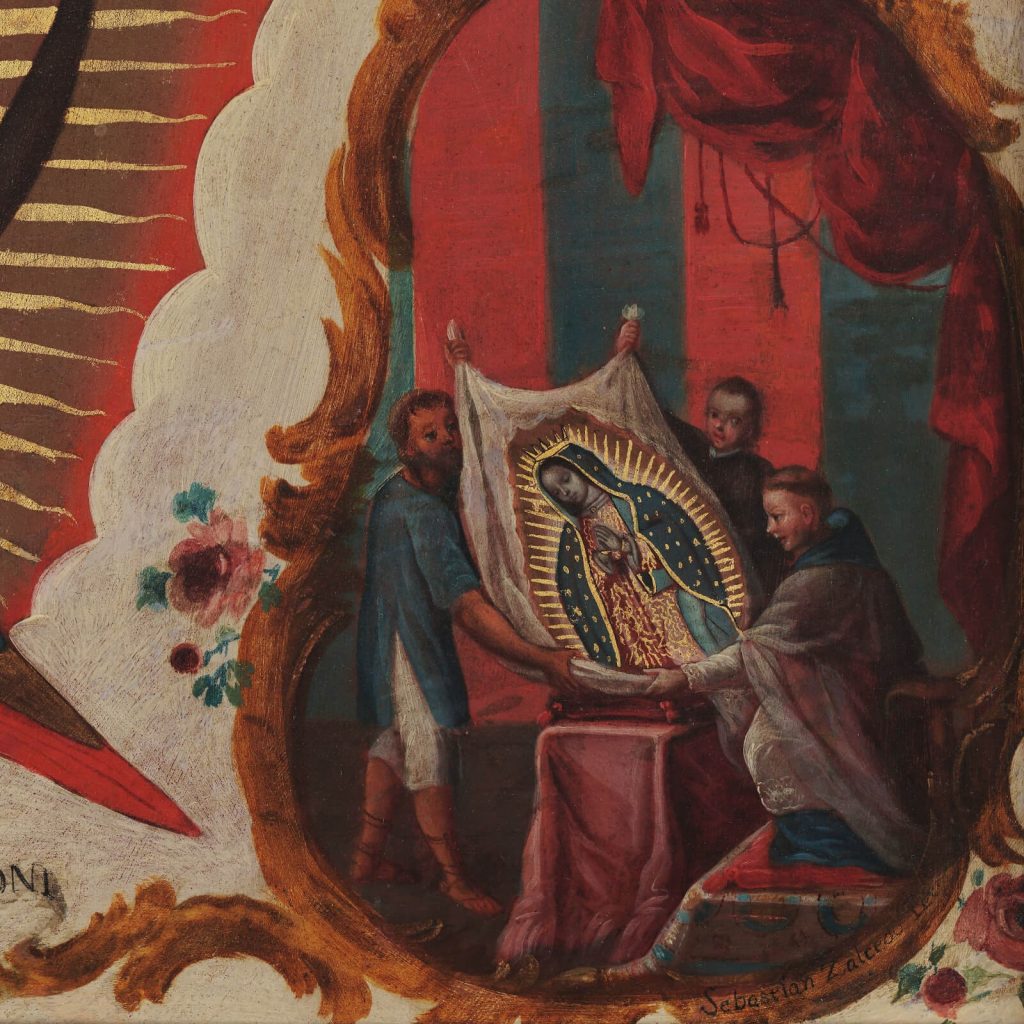
While the last apparition of the Virgin Mary (23 December 1531) is not depicted in Zalcedo’s Virgin of Guadalupe, it is still worth noting for its cultural significance. Juan Diego’s uncle, Juan Bernardino, stated he viewed the Virgin at his bedside. When Uncle Juan Bernardino visited the Archbishop, he stated the Virgin requested she be known as Guadalupe. Hence, Our Lady of Guadalupe.
Poole, Stafford, Our Lady Of Guadalupe: The Origins and Sources of a Mexican National Symbol, 1531-1797. University of Arizona Press, 1995.
Editors of Museo Colección Blaisten, “Sebastián Zalcedo”, Museo Colección Blaisten. Accessed August 13, 2021.
Editors of Museo Colección Blaisten, “Virgin of Guadalupe”, Museo Colección Blaisten. Accessed August 13, 2021.
DailyArt Magazine needs your support. Every contribution, however big or small, is very valuable for our future. Thanks to it, we will be able to sustain and grow the Magazine. Thank you for your help!